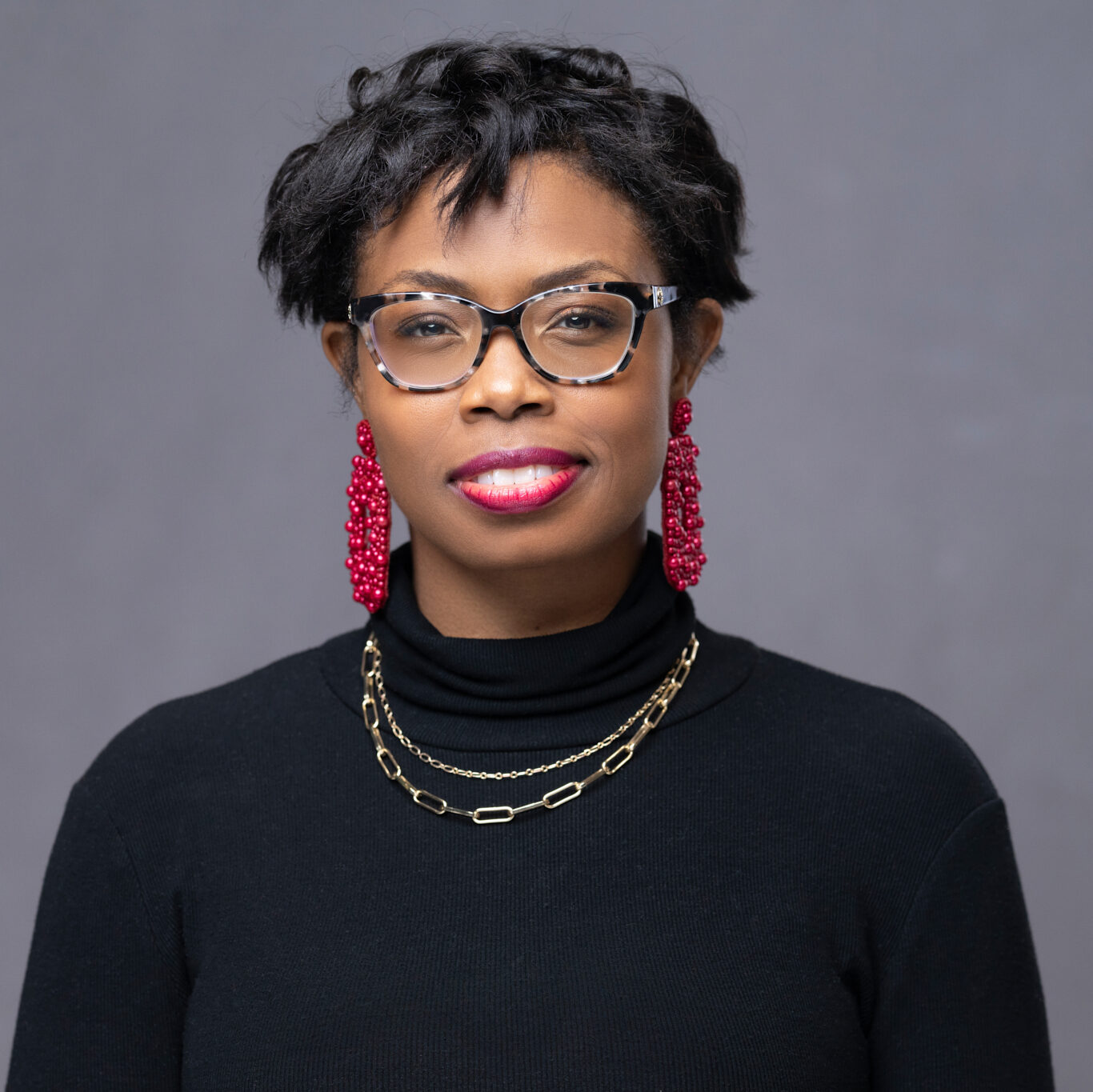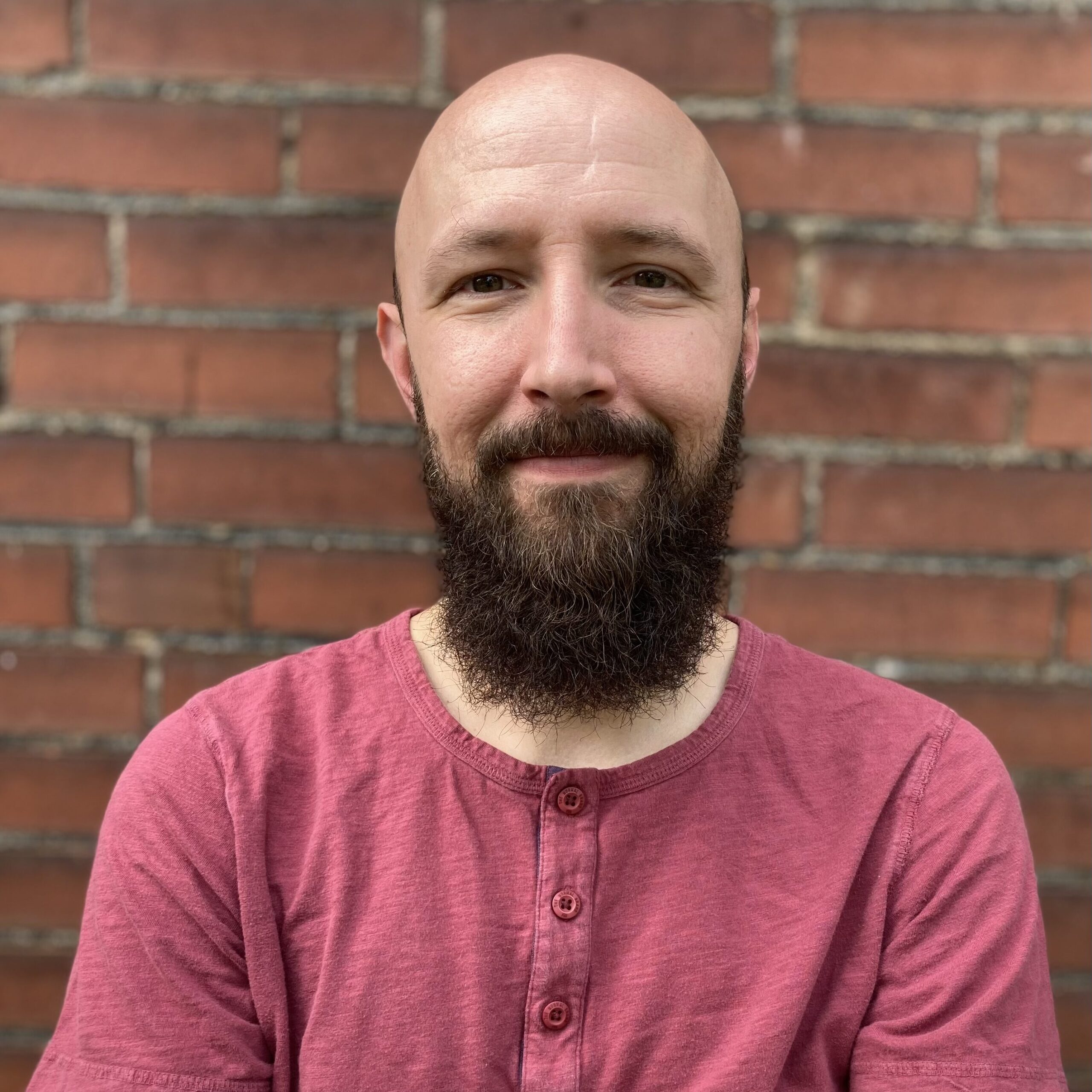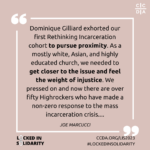This is an excerpt from the 2024 Conference workshop Becoming a Pro-Black Organization: A Healing-Centered Framework for Equity. Click here to download this workshop from the CCDA store.
You know that line in every city between the haves and the have-nots? Cornerstone CDC is right on that line.
Cornerstone began in 1976 as a “mercy ministry,” focused on housing when 70 families and individuals from a local church decided to move into the Skinker-DeBaliviere and West End neighborhoods. Today, Cornerstone CDC provides 38 units of affordable housing to families in need while providing administrative support and technical assistance for residents leading the West End Neighborhood plan.
We have a deep commitment to affirm the worthiness of every home in the West End. That’s our theory of change. We do that by supporting the greatest asset, which is our people. One way we do that is by being pro-Black in everything we do.
Our pro-Black stance is an organizational approach that intends to acknowledge, correct, and heal the effects of anti-Black racism in our context.
What is Anti-Black Racism?
Anti-Black racism was first coined in 2003 by Dr. Akua Benjamin. It is the prejudice, attitudes, beliefs, stereotyping, and discrimination that is targeted directly toward Black folks, people of African descent, and it’s rooted and tied to their unique experience of enslavement and its enduring legacy.
As a Christian CDC, we have to take an organizational approach to addressing anti-Black racism. Fighting against it or just ignoring it won’t challenge it. We have to work against the systems that are quietly repressive, including organizational cultures. A statement may be necessary, but it’s not sufficient.
Think about when a state of emergency is declared. Funds are released so that policies can be enacted to respond to the crisis. Extraordinary measures can be taken to start to repair the harm that was done. We are in a state of emergency, and to respond, we must take extraordinary measures to correct things within our organizations.
Part of this work is dismantling white supremacy, which is a form of racism centered upon the belief that white people are superior to people of other backgrounds and that whites should deservingly rule politically, economically, and socially. And this type of thinking can be found in our assumptions and our organizational practices.
That is what has to be broken down.
Becoming a Pro-Black Organization
A pro-Black organization builds the power for Black people with intent. We have to think about power and how we’re enabling, how we’re empowering, and how we’re building Black power, specifically.
This approach is not an exercise in diversity. It is not an exercise in making sure there are enough Black people around the table, but it is embedded in all of our systems, practices, and culture as an organization.
Becoming a pro-Black organization starts with internal systems, governance, and community engagement work. Let’s dive into each of these pieces.
Internal Systems
Our first internal system is human capital, HR.
Part of anti-Black racism is how histories, thoughts, and assumptions are metastasized in the body. At Cornerstone CDC, we lean into a healing-centered leadership model, which tries to paint a picture of what healthy leadership looks like. A core piece of this is showing up as an integrated self.
An example of a pro-Black HR practice is when there is news of the killing of a Black person, we want to make sure that people can take bereavement leave because of the community trauma. We have an official HR policy of taking care of yourself.
When thinking about your internal systems, ask yourself what conditions and circumstances Black people thrive in while doing this work. Answering the question and implementing the changes will be important because that’s where everybody can thrive.
The lesson here is you can’t hire your way out of a racist system. You have to rebuild the culture.
Our next internal system is branding. We are intentional in our representation, which is grounded in admiration and seeing the good in the culture. In our Cornerstone color palette, we added earth tones and some vibrancy that made space for Black joy. We added textures and patterns to celebrate Black culture.
When you see it as a privilege to serve Black people, you want to show it off, and you will do it well because it’s grounded in respect.
This also extends to the images that we use. We intentionally choose to highlight the best of people. We want to show people’s inherent dignity and not their trauma. We’re going to be deliberate to show people the way God sees them. When we show Black people, we choose to show joy, vibrancy, and beauty in those photos.
Governance
We are an organization founded by a white guy. Our first executive director was a white guy. Our board chair is a white guy. At one point, we had an all-white board. This is where we came from. We recognized our need, and we intentionally set out to make changes.
We’ve come to the place now where we work to have deliberate board recruitment weighted in the assumption of Black worth. We recruit the skills you need for an effective board, which our Black neighbors have.
As a place-based organization, we recognize that our Black neighbors who are most affected by our work are those who know the assets. They know the problems and solutions that are available in our context. We aim to create a board culture that operates in a way that makes Black people feel valued and want to serve with Cornerstone.
Diversity is not the goal. Fulfilling our mission with justice and love is the goal. We could be diverse without doing that. But when we center justice and love in our work and in how we do board recruitment, we know that we’re going to end up with the people around the table who need to be there. This also means that this can’t stop at recruitment because it’s not an exercise in diversity.
After recruitment, we must listen to the Black folks that have come to our table. When we listen, we get new ideas. We have to implement those new ideas, which brings changes to our board culture and how we make decisions. Part of being a pro-Black organization means sharing real authority.
Community Engagement
As a CDC, one of the biggest shifts we made was ceding power to our residents. It was a massive change organizationally. We went at their pace and empowered them to do budget approvals to hold decision-making power. And we thought this would be common, but it’s not. We actually won a global award for the depth with which we were able to make this resident-led.
Seeding power to residents is a healing, redemptive act rooted in trust.
A pro-Black organizational approach intends to build the power of Black people by advancing policies, practices, and cultural norms that position Black communities to be self-determined and to thrive. We recognize it engages a spiritual solution set in which corrective healing can come to places where the evil forces of anti-Black racism have caused harm, and it recognizes the blackness of our community as an asset to celebrate and a strong foundation to build upon.
We believe that, as we operate as a pro-Black organization with this approach, all people in our neighborhood will have the opportunity to thrive.

About Monique Thomas
Monique Thomas is a place-based equity advocate committed to advancing economic mobility through housing and resident voice. A Bronx native, Monique is currently the Executive Director of Cornerstone Corporation, where she leverages her background in urban planning/policy and experience with regional systems-change efforts to fulfill Cornerstone’s mission to love the whole person by championing choice and dignity. She is an active clergy member at Monument of Faith Church and earned her dual MBA/MPH at Washington University in St. Louis and BA at Cornell University.

About Jeremy Moore
When Jeremy Moore arrived in St. Louis to obtain his doctorate in chemistry, he began attending New City Fellowship and was drawn into God’s presence in St. Louis’ West End neighborhood, relocating there in 2014. Since then, Jeremy has stayed home to care for foster children with medical needs and serves as board president for Cornerstone, the neighborhood CDC, which works toward healing-centered community development. Jeremy has learned how being a neighbor, church life, and volunteer service can leverage his passions and influence to advocate for an equitable, thriving neighborhood with sustained opportunities for affordable housing.




